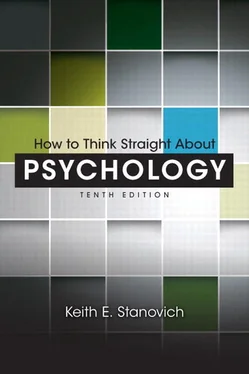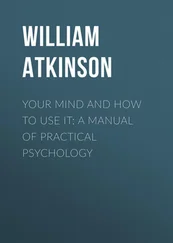Our earlier discussion of the idea of testing folk wisdom leads us to another interesting corollary of the falsifiability principle: Thoughts are cheap. To be specific, what we mean here is that certain kinds of thoughts are cheap. Biologist and science writer Stephen J. Gould (1987) illustrated this point:
Fifteen years of monthly columns have brought me an enormous correspondence from nonprofessionals about all aspects of science. . . . I have found that one common misconception surpasses all others. People will write, telling me that they have developed a revolutionary theory, one that will expand the boundaries of science. These theories, usually described in several pages of single-spaced typescript, are speculations about the deepest ultimate questions we can ask—what is the nature of life? the origin of the universe? the beginning of time? But thoughts are cheap. Any person of intelligence can devise his half dozen before breakfast. Scientists can also spin out ideas about ultimates. We don’t (or, rather, we confine them to our private thoughts) because we cannot devise ways to test them, to decide whether they are right or wrong. What good to science is a lovely idea that cannot, as a matter of principle, ever be affirmed or denied? (p. 18)
The answer to Gould’s last question is “No good at all.” The type of thoughts that Gould is saying are cheap are those that we referred to in our discussion of Karl Popper’s views: grand theories that are so global, complicated, and “fuzzy” that they can be used to explain anything—theories constructed more for emotional support because they are not meant to be changed or discarded. Gould was telling us that such theories are useless for scientific purposes, however comforting they may be. Science is a creative endeavor, but the creativity involves getting conceptual structures to fit the confines of empirical data. This is tough. These types of thoughts—those that explain the world as it actually is —are not cheap. Probably this is why good scientific theories are so hard to come by and why unfalsifiable pseudoscientific belief systems proliferate everywhere—the latter are vastly easier to construct.
Theories in science make contact with the world. They are falsifiable. They make specific predictions. Actually coming up with the theories that are truly scientific explanations is a difficult task. However, understanding the general logic by which science works is not so difficult. Indeed, there are plenty of materials about the logic of scientific thinking that have been written for children (Binga, 2009; Bower, 2009; Dawkins, 2012; Epstein, 2008; Swanson, 2001, 2004).
Errors in Science: Getting Closer to the Truth
In the context of explaining the principle of falsifiability, we have outlined a simple model of scientific progress. Theories are put forth and hypotheses are derived from them. The hypotheses are tested by a variety of techniques that we shall discuss in the remainder of this book. If the hypotheses are confirmed by the experiments, then the theory receives some degree of corroboration. If the hypotheses are falsified by the experiments, then the theory must be altered in some way, or it must be discarded for a better theory.
Of course, saying that knowledge in science is tentative and that hypotheses derived from theories are potentially false does not mean that everything is up for grabs. There are many relationships in science that have been confirmed so many times that they are termed laws because it is extremely doubtful that they will be overturned by future experimentation. It is highly unlikely that we shall find one day that blood does not circulate in the veins and arteries or that the earth does not orbit the sun. These mundane facts are not the type of hypotheses that we have been talking about. They are of no interest to scientists precisely because they are so well established. Scientists are interested only in those aspects of nature that are on the fringes of what is known. They are not interested in things that are so well confirmed that there is no doubt about them.
This aspect of scientific practice—that scientists gravitate to those problems on the fringes of what is known and ignore things that are well confirmed (so-called laws)—is very confusing to the general public. It seems that scientists are always emphasizing what they don’t know rather than what is known. This is true, and there is a very good reason for it. To advance knowledge, scientists must be at the outer limits of what is known. Of course, this is precisely where things are uncertain. But science advances by a process of trying to reduce the uncertainty at the limits of knowledge. This can often make scientists look “uncertain” to the public. But this perception is deceiving. Scientists are only uncertain at the fringes of knowledge—where our understanding is currently being advanced. Scientists are not uncertain about the many facts that have been well established by replicable research.
It should also be emphasized that, when scientists talk about falsifying a theory based on observation and about replacing an old, falsified theory with a new one, they do not mean that all the previous facts that established the old theory are thrown out (we shall talk about this at length in Chapter 8). Quite the contrary, the new theory must explain all of the facts that the old theory could explain plus the new facts that the old theory could not explain. So the falsification of a theory does not mean that scientists have to go back to square one. Complex theories can be generally right without being perfectly right; and beliefs can be getting closer to the truth without being exactly true (Radcliffe Richards, 2000).
Science writer Isaac Asimov illustrated the process of theory revision very well in an essay titled “The Relativity of Wrong” (1989), in which he wrote about how we have refined our notions of the earth’s shape. First, he warned us not to think that the ancient belief in a flat earth was stupid. On a plain (where the first civilizations with writing developed), the earth looks pretty flat, and Asimov urged us to consider what a quantitative comparison of different theories would reveal. First, we could express the different theories in terms of how much curvature per mile they hypothesized. The flat-earth theory would say that the curvature is 0 degrees per mile. This theory is wrong, as we know. But in one sense, it is close. As Asimov (1989) wrote,
About a century after Aristotle, the Greek philosopher Eratosthenes noted that the sun cast a shadow of different lengths at different latitudes (all the shadows would be the same length if the earth’s surface were flat). From the difference in shadow length, he calculated the size of the earthly sphere and it turned out to be 25,000 miles circumference. The curvature of such a sphere is about 0.000126 degrees per mile, a quantity very close to 0 per mile, as you can see. . . . The tiny difference between 0 and 0.000126 accounts for the fact that it took so long to pass from the flat earth to the spherical earth. Mind you, even a tiny difference, such as that between 0 and 0.000126, can be extremely important. The difference mounts up. The earth cannot be mapped over large areas with any accuracy at all if the difference isn’t taken into account and if the earth isn’t considered a sphere rather than a flat surface. (pp. 39–40)
But science, of course, did not stop with the theory that the earth was spherical. As we discussed earlier, scientists are always trying to refine their theories as much as possible and to test the limits of current knowledge. For example, Newton’s theories of gravitation predicted that the earth should not be perfectly spherical, and indeed this prediction has been confirmed. It turns out that the earth bulges a little at the equator and that it is a little flat at the poles. It is something called an oblate spheroid . The diameter of the earth from North Pole to South Pole is 7,900 miles, and the equatorial diameter is 7,927 miles. The curvature of the earth is not constant (as in a perfect sphere); instead, it varies slightly from 7.973 inches to 8.027 inches to the mile. As Asimov (1989) noted, “The correction in going from spherical to oblate spheroidal is much smaller than going from flat to spherical. Therefore, although the notion of the earth as a sphere is wrong, strictly speaking, it is not as wrong as the notion of the earth as flat” (p. 41).
Читать дальше












